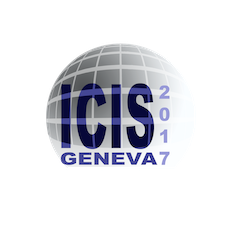Speaker
Description
The RF negative ion source NIO1 (Negative Ion Optimization 1) [1], built at Consorzio RFX in Padova (Italy), aims at investigating basic issues of ion source physics while providing a tool to benchmark and validate beam simulation codes. Due to its small size and its modular design, NIO1 represents a valuable testbed for DEMO relevant solutions, such as energy recovery and alternative systems for ion beam neutralization [1]. To such purposes it is important to improve NIO1 performance to make it comparable to those expected for other negative ion sources e.g. the full-size ITER ion source prototype SPIDER [2]. In particular the latest NIO1 upgrades focused on reducing the co-extracted electrons by enlarging the magnetic field strength close to the plasma grid and on improving the beam optics. As anticipated in [3], a new extraction grid was designed [4] to guarantee a better optics and a significant reduction of the beamlet deflection which proved to be quite large with the previous set of magnets [5]. The present paper presents the computation of the NIO1 beam optics as a function of the operating parameters. Throughout this work, the finite element codes OPERA 3D [6] and EAMCC [7] were used to model the NIO1 accelerator in both its previous and new configurations. Results from simulations are also compared with the data from NIO1 beamline diagnostics [8].
Acknowledgement
This work has been carried out within the framework of the EUROfusion Consortium and has received funding from the Euratom research and training programme 2014-2018 under grant agreement No 633053. The views and opinions expressed herein do not necessarily reflect those of the European Commission.
References
[1] M. Cavenago et. al., AIP-CP 1515, (2013) 157.
[2] P.Sonato et. al., Fusion Eng. Des. 84, (2009) 269.
[3] M. Cavenago et. al., NIBS 2016 conference proceedings.
[4] P. Veltri, et. al., AIP-CP 1655, (2015) 050009.
[5] A. Pimazzoni et. al., NIBS 2016 conference proceedings.
[6] www.cobham.com.
[7] G.Fubiani et. al., Phys. Rev. Spec. Top.-AC 11, (2008)014202.
[8] B. Zaniol et. al., AIP-CP 1655, (2015) 060010.
